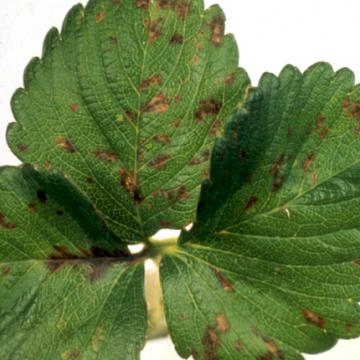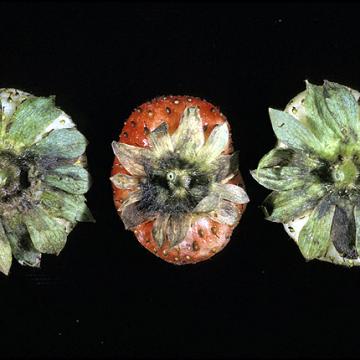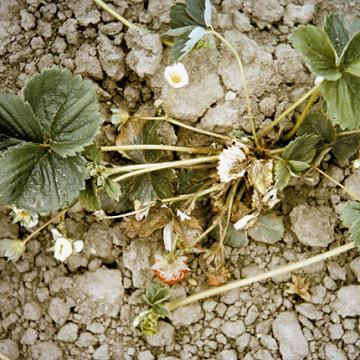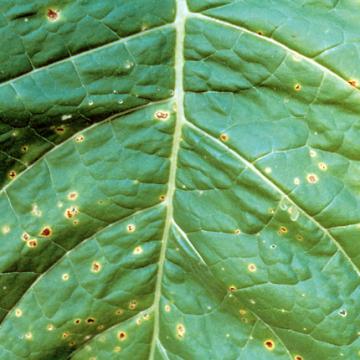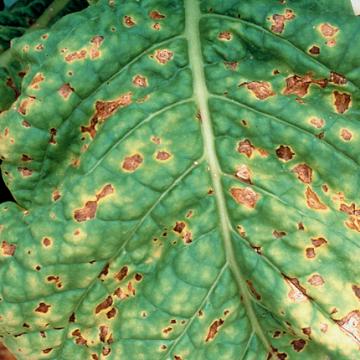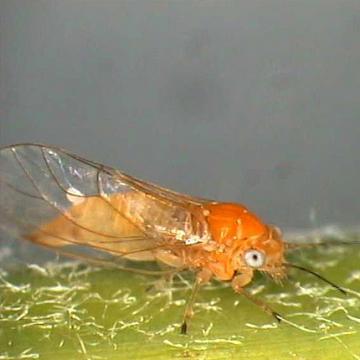DISEASE: Angular leaf spot
HOST: Strawberry
Early stage of disease begins as water-soaked, angular lesions, often with yellow ooze. There also are blight and vascular collapse stages.

Angular leaf spot | Strawberry
DISEASE: Angular leaf spot
HOST: Strawberry (Fragaria × ananassa)
PATHOGEN: Xanthomonas fragariae
SOURCE: M. Schroth
DISEASE: Angular leaf spot
HOST: Strawberry
Advanced stage of disease with dry, brownish necrotic lesions on upper leaf surface.
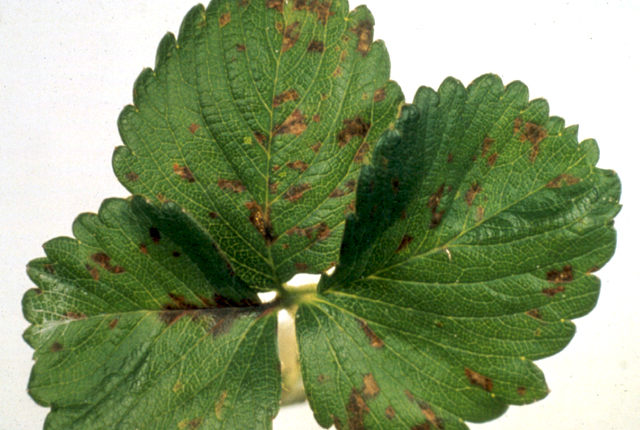
Angular leaf spot | Strawberry
DISEASE: Angular leaf spot
HOST: Strawberry (Fragaria chiloensis)
PATHOGEN: Xanthomonas fragariae
SOURCE: A. Alvarez
DISEASE: Angular leaf spot
HOST: Strawberry
Diseased sepals.
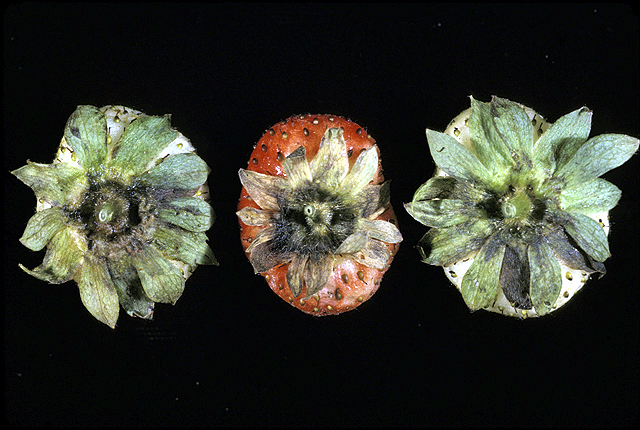
Angular leaf spot | Strawberry
DISEASE: Angular leaf spot
HOST: Strawberry (Fragaria × ananassa)
PATHOGEN: Xanthomonas fragariae
SOURCE: M. Schroth
DISEASE: Angular leaf spot
HOST: Strawberry
Vascular collapse stage occurs from systemic invasion of crown region.
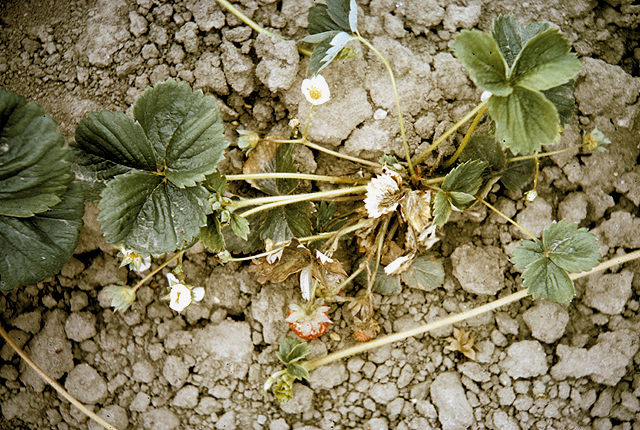
Angular leaf spot | Strawberry
DISEASE: Angular leaf spot
HOST: Strawberry (Fragaria × ananassa)
PATHOGEN: Xanthomonas fragariae
SOURCE: M. Schroth
DISEASE: Angular leaf spot
HOST: Tobacco
Leaf with light brown, angular spots. The difference between this disease and wildfire of tobacco is that wildfire is caused by a strain that produces tabtoxin. It causes conspicuous halos around lesions and large parts of a leaf may turn yellow .
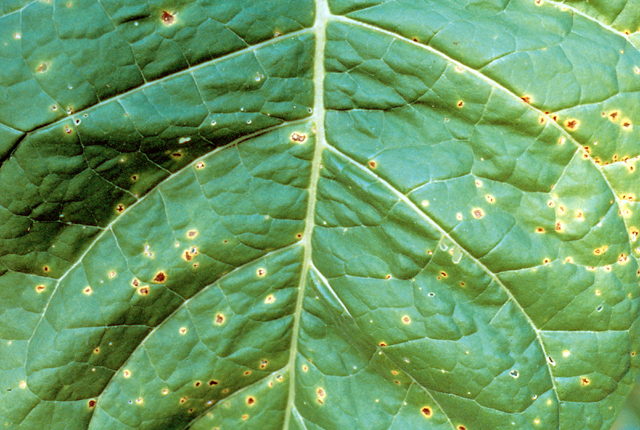
Angular leaf spot | Tobacco
DISEASE: Angular leaf spot
HOST: Tobacco (Nicotiana tabacum)
PATHOGEN: Pseudomonas syringae pv. tabaci
SOURCE: H. Shew
DISEASE: Angular leaf spot
HOST: Tobacco
Yellowing of adjacent tissues occur as spots age (midseason). It causes conspicuous halos around lesions. Large parts of a leaf may turn yellow.
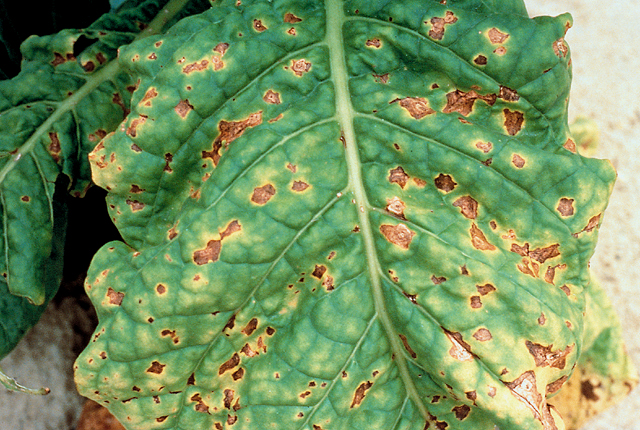
Angular leaf spot | Tobacco
DISEASE: Angular leaf spot
HOST: Tobacco (Nicotiana tabacum)
PATHOGEN: Pseudomonas syringae pv. tabaci
SOURCE: H. Shew
DISEASE: Angular leaf spot
HOST: Tobacco
Severely diseased leaf with extensive yellowing.
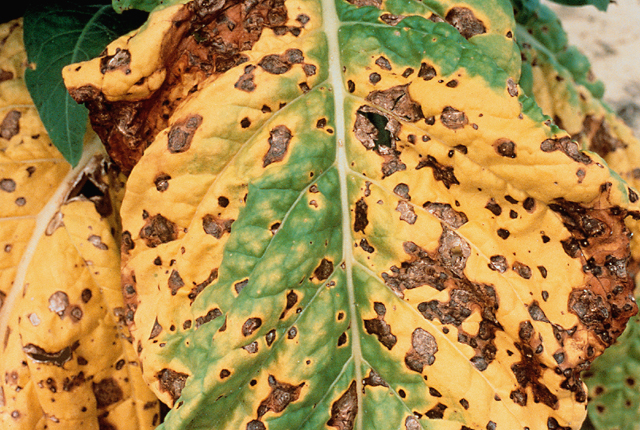
Angular leaf spot | Tobacco
DISEASE: Angular leaf spot
HOST: Tobacco (Nicotiana tabacum)
PATHOGEN: Pseudomonas syringae pv. tabaci
SOURCE: H. Shew
DISEASE: Apple proliferation
HOST: Apple
Spring form of the adult black-veined psyllid, Cacopsylla melanoneura, a vector of apple proliferation. In winter, adults are more greenish in color.
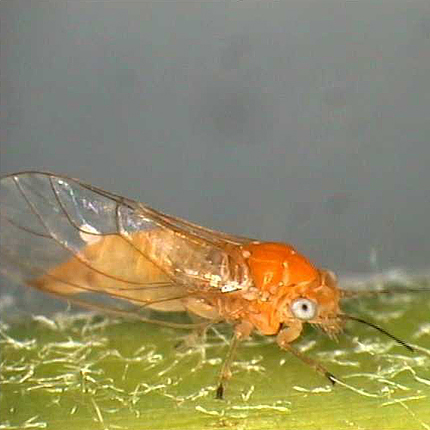
Apple proliferation | Apple
DISEASE: Apple proliferation
HOST: Apple (Malus domestica)
PATHOGEN: 'Candidatus Phytoplasma mali'
PATHOGEN SYNONYM: Phytoplasma Apple proliferation group
SOURCE: M. Wolf, W. Schweigkofler
DISEASE: Apple proliferation
HOST: Apple
Typical apple proliferation symptom of witches'-broom resulting from suppression of apical dominance and growth of dormant axillary buds. Branches are not usually bent down as shown here.
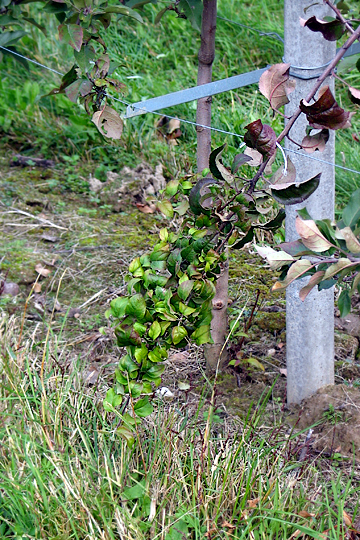
Apple proliferation | Apple
DISEASE: Apple proliferation
HOST: Apple (Malus domestica)
PATHOGEN: 'Candidatus Phytoplasma mali'
PATHOGEN SYNONYM: Phytoplasma Apple proliferation group
SOURCE: M. Wolf, W. Schweigkofler



